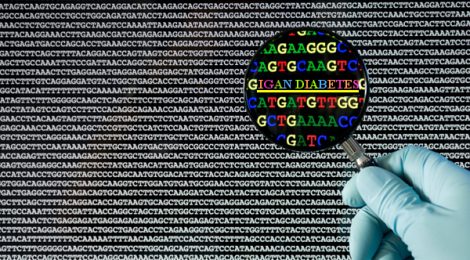
IgAN Genetic Marker Found Possibly Associated With Diabetes
Precise genes are identified that are associated with IgAN, Berger’s Disease
IgAN Patients with this genotype have abnormal sugars which lead to abnormal IgA proteins.
Similar abnormal sugar characteristics are well established as being associated with diabetes effects upon sensitive endothelial cell systems such as nerves and blood vessels.
It is possible this genetic target is key to a vast number of human ailments.

This additional major paper about the role of abnormalities in 0-glyscosylation reveals it is to many diseases especially those associated with ‘auto-immune’ disorders. The include diabetes, IgA Nephropathy, all manner of chronic inflammatory diseases and some forms of cancer. Click image to read the full paper very technical paper via PubMed
Researchers have discovered new a new IgAN genetic marker that is certain to lead to understanding IgA nephropathy (IgAN), or Berger’s disease, an autoimmune kidney disease and a common cause of kidney failure. The findings are vitally relevant not only to IgAN but as well to many other diseases with similar underlying molecular (sugar) defects, such as inflammatory bowel disease, certain types of blood disease, some cancers, and most of all diabetes (see accompanying paper to right). Hint: The commonality of all these ailments is the auto-immune damage done to endothelial cells by misbehaving molecules.
“Very little is known about the causes of IgAN, genetic or otherwise, so our discovery represents an important step toward developing better therapies for this disease,”
said lead author Krzysztof Kiryluk, MD, the Herbert Irving assistant professor of medicine at Columbia University Medical Center (CUMC).

From left: Bruce A. Julian, Colin Reily and Jan Novak – University of Alabama at Birmingham School of Medicine – click to read their paper in Plos One
The study, conducted by researchers at CUMC and the University of Alabama at Birmingham (UAB) School of Medicine, was published recently in PLOS Genetics.
IgAN occurs when an antibody called immunoglobulin A (IgA) collects in the kidneys, causing inflammation of the glomeruli, the kidneys’ filtering structures. Over time, the inflammation of delicate membranes will hinder the kidneys’ ability to filter waste from the blood.
About half of patients with IgAN have progressive disease and eventually develop kidney failure requiring dialysis or kidney transplant. Up to a third who reach that stage do not survive but for a very short time. There is no recognized cure for IgAN, but tonsillectomy is frequently successful in putting the disease into durable remission, some medications, along with blood pressure control, can slow disease progression.

Diabetes, both type 1 & 2, are known to be genetically driven auto-immune disorders. While Type 1 diabetes is most dire and requires insulin injections, Type 2 often responds well to modifications in diet and lifestyle. Indeed new studies show that as many as 40% of Type 2 diabetics can resolve their disease by avoid foods that place demands on their bodies sugar metabolism. In this paper we call that ‘abnormal O-glycosylation‘. It’s just possible that the same measures that treat Type 2 Diabetes might be similarly successful for IgAN patients. Click to read about the Type 2 Diabetes solution.
The key molecular defect in people with IgAN is abnormal O-glycosylation of IgA antibodies. O-glycosylation — in which a sugar molecule attaches to an oxygen atom in the amino acid residue of a protein — plays a role in various physiologic processes.
Studies of IgAN families have shown that problems in the O-glycosylation of IgA are common in people with IgAN and are largely genetic in origin, although the exact genes involved were here-to-fore unknown.
To identify genes linked to O-glycosylation problems in IgAN, Dr. Kiryluk and colleagues performed genome-wide association study (GWAS) of 2,633 people of European and East Asian ancestry, populations with high rates of the disease.
The researchers found that variations in two genes, C1GALT1 and C1GALT1C1, were significantly more common in people with high levels of the Gd-IgA1 marker.
“The genes are found on different chromosomes, but they make proteins that interact to form an enzyme critical for the proper glycosylation of IgA molecules,” said Dr. Kiryluk.
To confirm that C1GALT1 and C1GALT1C1 are involved in O-glycosylation, the researchers knocked down the two genes in cells in from IgAN patients and controls. Knocking down the genes increased production of the Gd-IgA1 marker in cells from both groups.
Variations in both genes, combined, accounted for about 7 percent of the overall variability in blood levels of Gd-IgA1 in the study population. “Since approximately 50 percent of variability in Gd-IgA1 levels is due to genetic factors, this means that about 43 percent of the genetic variability is still unexplained,” said Dr. Kiryluk.
“We started with a relatively small study population, so explaining 7 percent of variability between individuals with the disease was a good start. As we analyze more patients, we expect that we will find more genetic variants and can begin to piece together how these variants interact with environmental factors to cause disease.”
A greatly expanded GWAS study of some 10,000 patients is now underway.
Story Source: Materials provided by Columbia University Medical Center.
Recent Comments